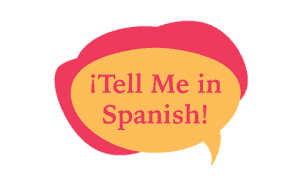The present progressive or continuous tense is used to talk about actions that are happening now or still in progress at the moment of speaking. As a result, in this quiz, you’ll practice the present progressive in Spanish.
In each sentence, you’ve been given the main verb. You must choose the correct answer to complete each statement based on the information provided. If you have questions, check how to form the present progressive in Spanish. You may also want to review my guide to Spanish gerunds to learn more about how to conjugate irregular gerunds.
Ahorita, Leo _________ (jugar) con su perro.
Leo is playing with his dog right now.
- A es jugando
- B está jugando
- C juega
Explanation: The present progressive in Spanish is used to describe actions that are taking place right now. For that reason, the right answer is Leo está jugando.
Clara _______(lavarse) las manos.
Clara is washing her hands.
- A están lavando
- B se está lavando
- C estarse lavando
Explanation: With the present progressive, reflexive verbs are transformed into gerunds and the reflexive pronoun must be placed either before ‘estar’ or attached to the gerund. In this case, the only right option is ‘se está lavando’.
Nosotros _________ (ver) la tele.
We’re watching TV.
- A están viendo
- B estar viendo
- C estamos viendo
Explanation: In the present progressive, the verb estar tells who is performing the action. Since in this example the pronoun is ‘nosotros’, the correct answer is nosotros estamos viendo la tele.
Lucía, ¿qué ________ (decir)?
What are you saying Lucía?
- A dice
- B estás diciendo
- C estás deciendo
Explanation: Estar + gerund is the formula for the present progressive in Spanish. Some gerunds, such as ‘decir’, have a spelling change from ‘e’ to ‘i’. Therefore, in this case, the correct conjugation is estás diciendo.
Yo ________ (leer) una revista.
I’m reading a magazine.
- A estoy leendo
- B estoy leyendo
- C estoy leiendo
Explanation: -ER and -IR verbs that have two vowels in their stem must use the gerund ending -yendo to ease the pronunciation. Since leer falls into this category, leyendo is the appropriate gerund for this verb.
Samuel y Pedro ________ (construir) una casa del árbol.
Samuel and Pedro are building a treehouse.
- A están construiendo
- B están construyendo
- C está construyendo
Explanation: -ER and -IR verbs that have two vowels in their stem, must use the ending -yendo to build their gerund form. As a result, están construyendo is the right answer for this example.
Bill _________ (levar) su carro.
Bill is washing his car.
- A está lavando
- B está lavándose
- C se está lavando
Explanation: When talking about washing something, lavar shouldn’t be used in its reflexive form. So, in this case, the right answer is está lavando.
Niños, ¿qué _______ (hacer)?
Kids, what are you doing?
- A haciendo
- B son haciendo
- C están haciendo
Explanation: To form the present progressive in Spanish, you must use the structure estar (present) + gerund. In the options given, están haciendo is the one that uses these elements.
Yo_______ (llamar) a Sonia.
I’m calling Sonia.
- A estoy le llamando
- B estoy llamando
- C estoy llamándole
Explanation: Some Spanish transitive verbs must always be followed by a direct object pronoun. With the present progressive, you must place the pronoun (in this case, ‘le’) before ‘estar’ or attached to the gerund. Also, remember that when attaching a reflexive or object pronoun, we must add an accent to the verb in gerund form.
Tony y Polo _______ (mentir).
Tony and Polo are lying.
- A están mentiendo
- B están mintiendo
- C está mintiendo
Explanation: Stem-changing verbs in the present tense also have some changes when transforming them into gerunds. Mentir has an ‘e’ to ‘i’ change, as a result, están mintiendo is the right answer.
Quiz Results
| Question | Answer Given | Correct Answer | |
|---|---|---|---|
| Ahorita, Leo _________ (jugar) con su perro. | |||
| Clara _______(lavarse) las manos. | |||
| Nosotros _________ (ver) la tele. | |||
| Lucía, ¿qué ________ (decir)? | |||
| Yo ________ (leer) una revista. | |||
| Samuel y Pedro ________ (construir) una casa del árbol. | |||
| Bill _________ (levar) su carro. | |||
| Niños, ¿qué _______ (hacer)? | |||
| Yo_______ (llamar) a Sonia. | |||
| Tony y Polo _______ (mentir). |
